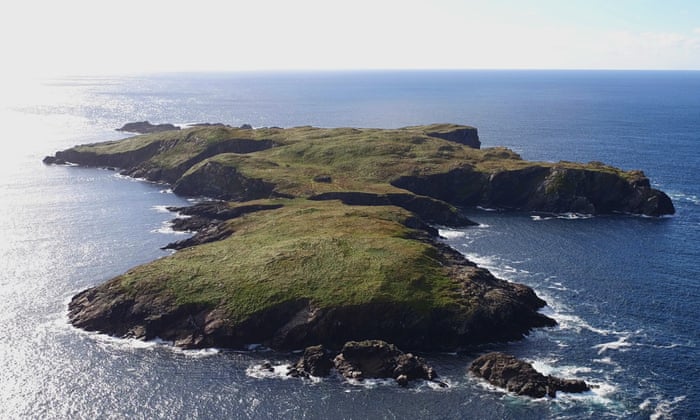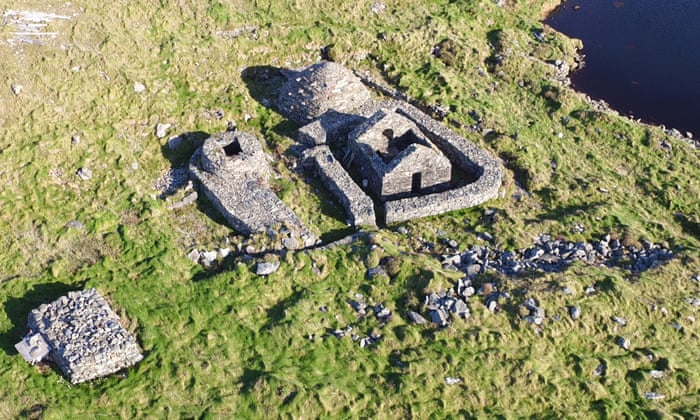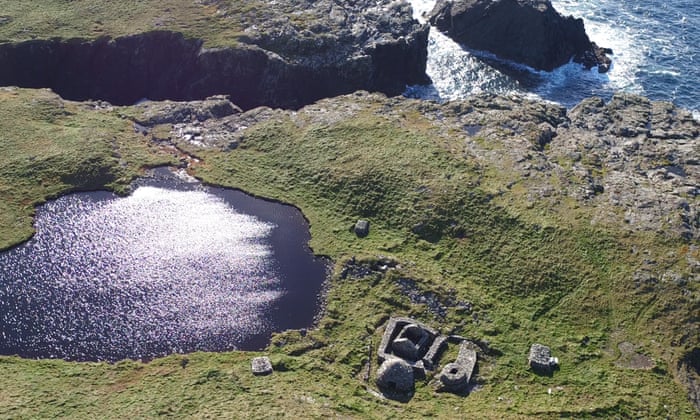Craggy island for sale: gulls, grass, wind and no mod cons
Uninhabited High Island off the west coast of Ireland can be yours for £1.1m

A craggy island off the west coast of Ireland which was home to iron age settlers, medieval monks and a poet in search of inspiration has gone on sale for €1.25m (£1.1m).
High Island, an 80-acre swath of rock, heather and wind probably too remote even for Father Ted, sits in the Atlantic two miles off the coast of Galway.
After 3,000 years of on-off human settlement it is now uninhabited and awaiting a buyer who has their own transport, preferably a robust dinghy or helicopter.
“It’s lovely, a beautiful place,” said Luke Spencer, of Spencer Auctioneers, which has listed High Island on the property site MyHome.ie. “A lot of birds and grasses and ferns. You’ve got Atlantic views all the way around.”

Since going on the market last Friday it has received more than 7,000 views, said the auctioneer. “That’s massive.”
Spencer thinks the likeliest buyer will be the Irish state or a wealthy individual, perhaps a Russian oligarch or technology tycoon. “Someone from Google, or [Mark] Zuckerberg.”
Star Wars fans should note that High Island – Ardoileán in Irish – is a good 200 miles north of the Skellig Islands, rocky outcrops off County Kerry which served as Luke Skywalker’s sanctuary.
The island, about the size of 60 football fields, rises to 206 feet above sea level at its centre and slopes down to cliffs and deep inlets.
It includes two freshwater lakes and a host of birds: gulls, fulmars, Arctic terns, Manx shearwaters, barnacle geese, petrels, oystercatchers and peregrine falcons, making the island an EU special protection area.
Pollen evidence suggests there was human settlement about 3,000 years ago. Archaeologists believe monks converted a secular settlement into a monastery in the seventh century. It was reputedly founded by Saint Féchín, who founded other monasteries across Ireland until succumbing to yellow fever in 665.
The monastery’s ruins, which include a church, altar, beehive huts and graves, are owned by the Irish state and excluded from the sale.
A prominent Galway family, the Martins, owned the island in the 18th century and leased it to copper miners, who built stone huts and left a mineshaft.
Richard Murphy, a poet who lived on the nearby island of Inishbofin, owned it from 1969 to 1998.

“I got excited at the thought of buying this inaccessible holy island, restoring the beehive cells and oratory of its derelict hermitage and preserving the place from destruction,” he wrote in his memoir, The Kick.
Visits to the island influenced some of his poems. According to Tim Robinson, author of a trilogy about Galway’s Connemara region, weather deterred Murphy from long visits. “After one spell of five days during which he saw the sun for 20 minutes he gave up spending more than a few hours there at a time.”
Murphy sold High Island to a friend, Féichin Mulkerrin, who is now selling it.
Spencer said the place was not all howling wind and darkness. “When we visited we had a stunning day out there. I’m in Connemara at the moment and it’s blue skies.”
The existence of a small modern building and septic tank should help a new owner obtain planning permission for a new dwelling or rehabilitation, said the auctioneer.
The online ad hinted at a fixer-upper: “Please note we have not tested any apparatus, fixtures, fittings or services. Interested parties must undertake their own investigation into the working order of these items.”
https://www.theguardian.com/world/2019/feb/14/craggy-island-for-sale-gulls-grass-wind-and-no-mod-cons
https://www.theguardian.com/world/2019/feb/14/craggy-island-for-sale-gulls-grass-wind-and-no-mod-cons

No comments:
Post a Comment